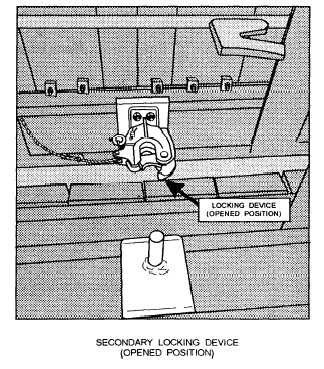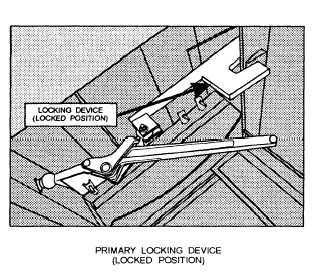Figure 7-5.—Tilt-bed trailer.
through the doors of a van trailer. Stake trailers are easy
to load and unload with forklifts from the side when the
side stakes are removed. Any loads that extend over the
width or length of the flatbed must be visually marked
with a flag during the day and lights at night.
NOTE: Side stakes are collateral equipage for the
stake trailer. The operator is responsible for the side
stakes if they are removed, broken, or lost. When the
side stakes are removed for storage, ensure the stakes
are tagged with the USN number of the trailer.
Damaged, lost, and in some cases stolen stakes should
be reported immediately through your chain of
command.
Low-Bed Trailer
The low-bed trailer (fig. 7-4) is often identified by
the term lowboy. This trailer is used for hauling heavy
equipment and material that is overheight and
overweight for stake trailers. Low-bed trailers are
heavily constructed to handle loads of 35 tons or more.
Tilt-Bed Trailer
The tilt-bed trailer (fig. 7-5) is often identified by
the term tilt-top and is designed to tilt toward the rear
for ease of loading and unloading without the use of
ramps. Tilt-beds are primarily used to haul equipment;
however, they also are used to transport construction
materials and supplies.
To avoid damaging equipment and trailers, you
should remember the following rules:
1. Do not attempt to load heavy equipment on a
tilt-bed trailer from a loading ramp or a dock.
2. Before loading heavy equipment on a tilt-bed
trailer, you should ensure the locking mechanism (fig.
7-6) is fully disengaged.
7-3
Figure 7-6.—Tilt-bed deck-locking mechanism.






